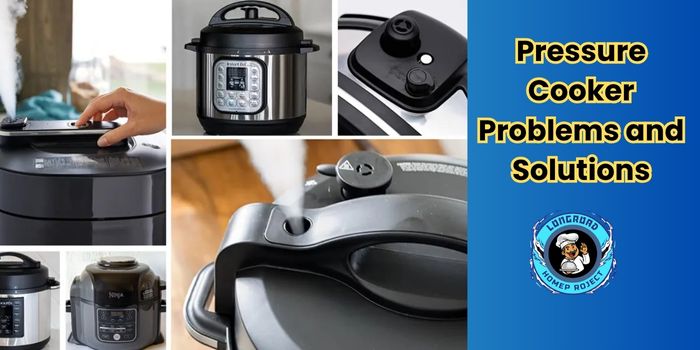As an Amazon Associate I earn from qualifying purchases.
Pressure cooker problems and solutions” wasn’t a phrase I expected to Google ten minutes before dinner — but there I was, apron on, Instant Pot hissing, and nothing cooking.
It was supposed to be a quick, cozy weeknight dinner. I’d prepped everything for beef stew, tossed the ingredients into my Instant Pot, set the timer, and waited for that magical pressurizing sound. But instead of sealing, the cooker sputtered, hissed, and stayed stubbornly cold inside. I opened the lid — cold broth, raw beef, and rising panic.
That night turned into a scramble of last-minute stovetop improvising and takeout backup. But it also kicked off a personal mission: to understand common pressure cooker problems and find reliable, real-world solutions that anyone (especially busy home cooks like me) could use.
Why Pressure Cooker Issues Are So Common (And So Fixable)
If you’ve ever had your Instant Pot not turning on, leaking steam, or refusing to build pressure no matter what you do — you’re not alone. Pressure cookers are incredibly efficient, but they’re also finicky. One tiny issue with the rubber gasket, lid alignment, or water content can throw the entire system off.
Even experienced users occasionally run into that frustrating moment when the pressure cooker won’t pressurize, or worse, when it starts making a high-pitched whistle that could wake the neighbors. The good news? Most of these issues are fixable with a little know-how, a bit of patience, and some simple maintenance.
The Importance of Routine Maintenance (Trust Me on This One)
I’ll admit it — I wasn’t cleaning my seal for the pressure cooker properly. I didn’t know the rubber gasket could stretch or collect odors. I assumed the vent pipe would never clog. Basically, I treated my Instant Pot like a magic box, not a smart machine that needs regular care.
But here’s the truth: just like you wouldn’t ignore a squeaky brake on your car, you shouldn’t overlook the signs your pressure cooker gives you. A bit of regular cleaning and checking your parts (especially the pressure cooker gaskets, sealing ring, and valve) can prevent most of the issues people panic about.
What This Article Will Help You Do
In this guide, I’ll walk you through the most common pressure cooker problems and show you exactly how to fix them — step by step. Whether your Instant Pot won’t turn on, you’re dealing with mysterious steam leaks, or your stew is taking forever to pressurize, you’ll find the solution here.
You’ll learn:
- How to quickly troubleshoot issues before they ruin dinner
- When it’s time to replace your rubber seal for the pressure cooker
- Tips to avoid mistakes that can damage your unit or waste food
- Smart cleaning habits to make your pressure cooker last for years
So if your trusty cooker has been acting up, don’t give up on it. Grab a cup of tea (or wine — I don’t judge), and let’s fix this together.
It’s one of the most frustrating kitchen moments: you’ve added all your ingredients, locked the lid, pressed “Start,” and… nothing. The timer just sits there. No pressure buildup, no familiar hiss, no comforting “click” that signals dinner is on the way. If your pressure cooker won’t pressurize, it usually comes down to one of four key issues — and thankfully, all of them are fixable.
Let’s break them down.
Insufficient Liquid in the Pot
This is the #1 reason most pressure cookers fail to build pressure.
Pressure cooking relies on steam to create high internal pressure — and steam comes from liquid. If there’s not enough, your cooker simply can’t pressurize, no matter how long you wait.
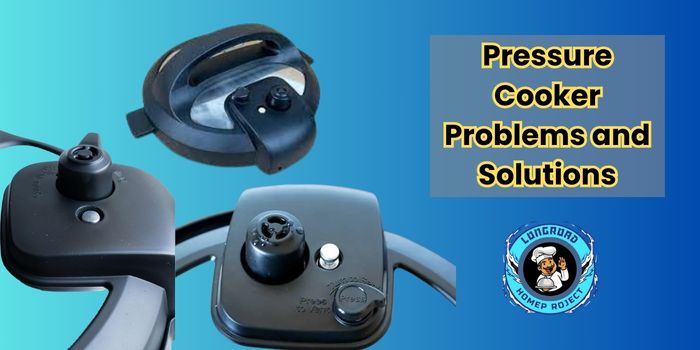
How Much Liquid Do You Actually Need?
While the exact minimum varies slightly by brand, most modern pressure cookers (including Instant Pot) require:
- At least 1 cup of thin liquid (like water, broth, or juice) to pressurize effectively.
- Thicker liquids like tomato sauce or cream-based soups don’t count — they don’t generate enough steam on their own.
Example Liquid Amounts:
- Stew or chili with lots of meat/veggies: add 1–1.5 cups broth.
- Beans and lentils: 2–3 cups water per 1 cup dry beans.
- Pasta or rice: enough water to fully submerge plus a bit extra.
Fix It Tip: If your recipe seems dry or thick, stir in more broth or water before sealing. It won’t water down the flavor — it’ll actually help your cooker perform.
Faulty or Misaligned Rubber Gasket
The rubber gasket (also called a sealing ring) is what makes the airtight seal between the lid and the pot. If it’s not seated properly — or if it’s cracked, stretched, or dried out — the steam escapes, and your cooker can’t pressurize.
How to Check Your Gasket:
- Remove the gasket from the lid and look for:
- Warping or stretching
- Discoloration or sticky buildup
- Tiny cracks or dry, brittle spots
- Run your finger along the entire loop. If it feels uneven or has lost elasticity, it needs replacing.
When to Replace It:
- Every 12–18 months with moderate use.
- Sooner if you notice smells that won’t go away (gaskets absorb odors) or visible damage.
- Always use brand-specific replacements. For Instant Pot users, search for official pressure cooker gaskets that match your model size.
Fix It Tip: Clean the gasket regularly with mild soap and warm water. Let it air dry before reinserting.
Steam Release Valve in the Wrong Position
If the steam release valve (also known as the pressure valve or float valve) is left in the venting position instead of sealing, the pot will never pressurize — no matter how long it runs.
Visual Check:
- On most models:
- “Sealing” is when the valve is turned inward (toward the center of the lid).
- “Venting” is when it’s turned outward (letting steam escape).
- Some cookers have automatic float valves that rise when pressure builds. If yours isn’t rising, something’s off.
Fix It Tip: Before starting, double-check the valve is turned to SEALING. It’s easy to forget — especially if you’re multitasking.
Lid Not Properly Closed
Sometimes, even when the lid seems locked, a small misalignment can prevent pressure from building. This can be due to a sticky gasket, debris along the edge, or just rushing the locking mechanism.
Tips for Proper Lid Closure:
- Align the arrows or marks on the lid and base (most models have guides).
- Rotate firmly until you hear or feel a click.
- Make sure the pressure float pin (a small metal or plastic piece near the valve) drops down and rises as it should when pressure builds.
Instant Pot Lid Sensors:
Instant Pots and many other electric models have safety sensors that detect lid alignment. If it’s off even slightly, the system won’t allow pressurizing.
Fix It Tip: Wipe the lid rim and gasket area before locking. Double-check that the gasket is snug and centered.
Seeing steam hiss out from your pressure cooker when it shouldn’t? Don’t worry — this is one of the most common pressure cooker problems, and the good news is, the fixes are usually simple. Whether you’re dealing with a stovetop model or an Instant Pot, leaks can often be traced back to just a few culprits. Let’s walk through each one.
Worn-Out Rubber Seal
Your pressure cooker’s rubber seal (also called the gasket) is its MVP. It creates the airtight environment needed to build and maintain pressure. Over time, though, it can wear out — and that’s when leaks begin.
Signs Your Gasket Needs Replacing:
- You see steam escaping from the edges even when the lid is locked.
- The rubber feels dry, cracked, or overly soft.
- Your cooker takes longer to build pressure than it used to — or fails to pressurize at all.
- There’s a lingering unpleasant odor, even after washing.
Even if your seal looks fine, if it’s been more than 12–18 months (or you use your cooker heavily), it’s time to swap it.
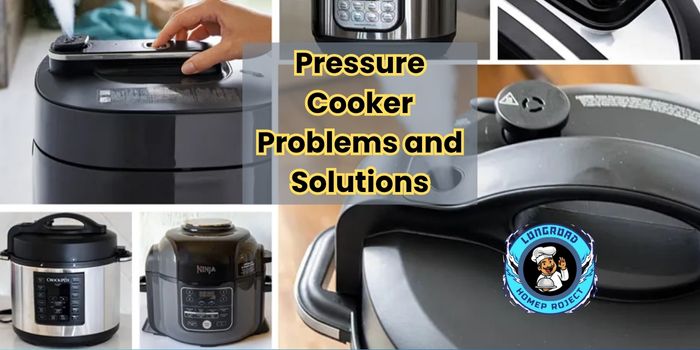
Where to Buy Compatible Gaskets:
- For electric models like Instant Pot, search: “rubber gasket for pressure cooker [model]”.
- Always buy genuine parts or certified compatible replacements.
- Amazon, manufacturer websites, and kitchen retailers like Williams Sonoma or Sur La Table carry most sizes.
Fix It Tip: Keep a spare on hand! Many home chefs rotate between two gaskets — one for savory meals and one for sweets, so smells don’t linger.
Overfilling the Pot
Too much food or liquid? That’s a guaranteed mess.
Pressure cookers have a maximum fill line — typically:
- 2/3 full for most foods
- 1/2 full for foaming or expanding items (like rice, beans, lentils, or pasta)
Exceeding these levels leads to food being forced into the venting system, clogging it or causing steam to leak around the lid.
Foam-Forming Foods to Watch:
- Rice
- Lentils
- Pasta
- Applesauce
- Oatmeal
These ingredients create bubbles and foam that can push against the lid and sealing ring, disrupting the pressure.
➡️ Fix It Tip: Use a bit of cooking oil when pressure cooking foamy foods. It helps reduce surface tension and controls bubbling.
Food Debris on Rim or Seal
Even a single grain of rice can ruin the seal.
If food particles get trapped between the gasket and the lid rim, your pressure cooker won’t seal properly — causing steam to leak out the sides.
Cleaning Routine:
- Always wipe down the lid rim and gasket before locking the lid.
- Inspect the float valve and pressure valve holes — rice, dried sauces, or tiny seeds love hiding there.
- Soak the gasket in warm soapy water weekly if you use the cooker often.
Fix It Tip: Use a soft toothbrush to scrub around the edges and vent areas for a deep clean.
How to Check If Your Pressure Cooker Is Working Properly
Before you toss your unit or call tech support, here are a few easy ways to verify if your pressure cooker is functioning as it should.
Steam Test Method
This is the gold standard test to check if your cooker builds pressure correctly.
How to Do It:
- Fill your pressure cooker with 2–3 cups of water.
- Close the lid and set the steam release valve to sealing.
- Set a manual cook time (like 5 minutes on high).
- Watch:
- Steam should escape briefly during preheating, then stop.
- After a few minutes, the float valve should rise.
- If it doesn’t, there’s likely a seal, liquid, or valve issue.
Pass the steam test? Your cooker is pressurizing just fine.
Safety Lock Engagement
Most modern pressure cookers have a built-in safety lock that engages once pressure builds. If yours doesn’t lock — or locks too early — that’s a red flag.
What to Check:
- On electric models (like Instant Pot), the lid icon on the screen should light up once locked.
- On stovetop cookers, you should not be able to open the lid once it’s under pressure.
- If you can twist the lid open mid-cycle — stop using it immediately and check the gasket and lock mechanism.
Fix It Tip: Never force the lid shut. If it doesn’t lock easily, check for food debris or misalignment.
Noise and Smell Detection
Your ears and nose can help diagnose pressure cooker issues before they become dangerous.
What’s Normal?
- Low hissing or light rattling during the pressurizing phase.
- Brief bursts of steam while it builds pressure.
Warning Signs:
- Continuous loud hissing = steam valve or gasket problem.
- Burnt smells = food stuck to the bottom or not enough liquid.
- No sound at all = might mean it’s not pressurizing yet or the appliance isn’t heating.
Fix It Tip: If your cooker smells like burnt food, cancel the cycle immediately, release pressure naturally, and clean the pot thoroughly before restarting.
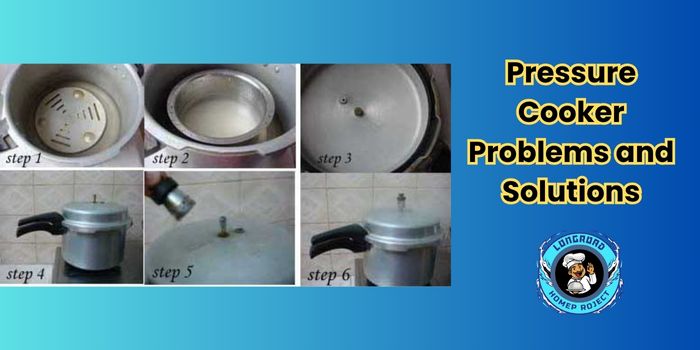
Instant Pot Won’t Turn On – Troubleshooting Electrical Failures
Sometimes, the problem isn’t the seal or the steam — it’s the power.
Outlet or Power Cord Problems
Before assuming your Instant Pot is broken, test the simplest culprits first.
Try This:
- Plug the unit into a different wall outlet.
- Test the outlet with another appliance (like a toaster or phone charger).
- Inspect the power cord for:
- Burn marks
- Frayed or exposed wires
- Loose plugs or bent prongs
Fix It Tip: Use a surge protector to avoid future issues. Pressure cookers are sensitive to power surges and outages.
Internal Fuse Burnout
If your Instant Pot or electric pressure cooker still won’t power on — and the cord and outlet are fine — it could be a blown internal fuse.
Signs:
- No lights, beeps, or screen activity
- You’ve tried multiple outlets with no success
- The cooker powered off mid-cycle and won’t come back on
Fix It Tip: Unfortunately, this isn’t usually fixable at home. You’ll need to contact the manufacturer or a certified repair technician. If under warranty, this may be covered.
Instant Pot Leaking Steam During Cooking – Is That Normal?
Not all steam is a bad sign. The timing and amount of steam make the difference.
During Preheat Phase – Normal
As your Instant Pot heats up, it releases some steam while building pressure. This is 100% normal.
- You’ll hear hissing and see steam from the valve area.
- This should last a few minutes, followed by a click as the float valve rises and seals the pot.
Constant Steam Leak – Not Normal
If you see continuous steam escaping throughout the cooking phase, it’s likely due to:
- Misaligned lid or broken locking mechanism
- Worn rubber seal for pressure cooker
- Steam release valve stuck in “venting” mode
Fix It Tip: Stop the cooking cycle, release pressure, and:
- Reseat the sealing ring
- Realign the lid
- Ensure the valve is turned to sealing, not venting
Must-Know Tips to Prevent Future Pressure Cooker Problems
Using a pressure cooker safely and effectively isn’t just about following the recipe — it’s also about proactive care. Here are essential tips that will save you from future headaches and extend the life of your cooker:
- Clean the gasket and lid after every use
Food particles or residue on the gasket or sealing ring can prevent a proper seal, causing steam leaks or pressure issues. A quick rinse with warm, soapy water goes a long way. - Replace the seal every 12–18 months
The rubber seal (or gasket) naturally wears out over time. If you notice cracking, stretching, or hardening, it’s time to swap it out. Regular replacement keeps your pressure cooker functioning efficiently and safely. - Store the lid upside down
Storing the pressure cooker with the lid locked in place can compress and deform the gasket. Instead, store the lid upside down or separately to help maintain the gasket’s shape and sealing ability. - Avoid overfilling
Stick to the fill lines. Overfilling can block the vent pipe, create foam, or trigger safety mechanisms that stop pressure from building properly. This is especially important when cooking rice, beans, or starchy foods. - Run regular maintenance tests
Periodically do a quick steam test. Add water to the cooker and bring it to pressure. Listen for unusual noises, watch for proper sealing, and ensure the pressure builds and releases as expected. These mini checkups can alert you to issues before they become major problems.
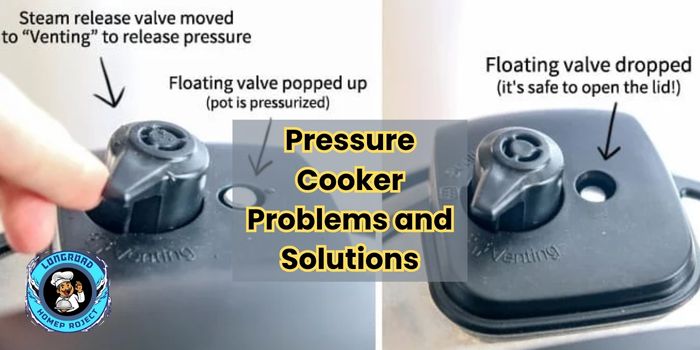
What I Learned the Hard Way
I’ll be honest — I learned some of this the hard way.
One evening, I was in a rush and forgot to check the rubber seal before cooking. I tossed in my ingredients, locked the lid, and turned up the heat. After several minutes, I noticed the cooker wasn’t building pressure — just hissing steam non-stop.
Turns out, a bit of food debris had dried onto the gasket from my last use, preventing a proper seal. I ended up with undercooked food and a steamy mess on my counter.
Since then, I always take a minute to inspect the gasket, clean the lid, and run occasional tests. It’s a small habit that’s saved me from big issues.
Takeaway: A little maintenance can go a long way. Don’t skip the basics — they matter more than you think when it comes to pressure cooking safely and smoothly.
FAQs – Voice Search & Snippet Optimized
Why is my pressure cooker leaking?
✅ It’s usually due to a worn-out rubber gasket or a misaligned lid. Double-check that the seal is seated correctly and not damaged.
What to do if the pressure cooker won’t pressurize?
✅ Make sure there’s enough liquid inside (at least 1 cup), the gasket is intact, and the lid and pressure valve are locked properly.
How do I know if my pressure cooker is working correctly?
✅ Perform a steam test: if steam builds and the safety lock engages, your pressure cooker is functioning correctly.
Why is my pressure cooker making a high-pitched noise?
✅ That sound often means a loose or blocked pressure valve, or a poor seal from the gasket. Clean the valve and inspect the gasket for proper placement.
When should I replace my pressure cooker seal?
✅ Replace the rubber gasket every 12–18 months, or sooner if you notice cracks, warping, or steam escaping during use.
Conclusion
Most pressure cooker problems are simple to solve with a little attention and care:
- ✅ Leaks? Check the gasket
- ✅ No pressure? Add liquid + check seals
- ✅ Noisy? Clean vents and inspect alignment
Pro Tip: Regular cleaning and replacing worn parts can extend the life of your cooker and keep meals safe and tasty.
Don’t call a repair tech just yet—most fixes are DIY-friendly!
As an Amazon Associate I earn from qualifying purchases.
